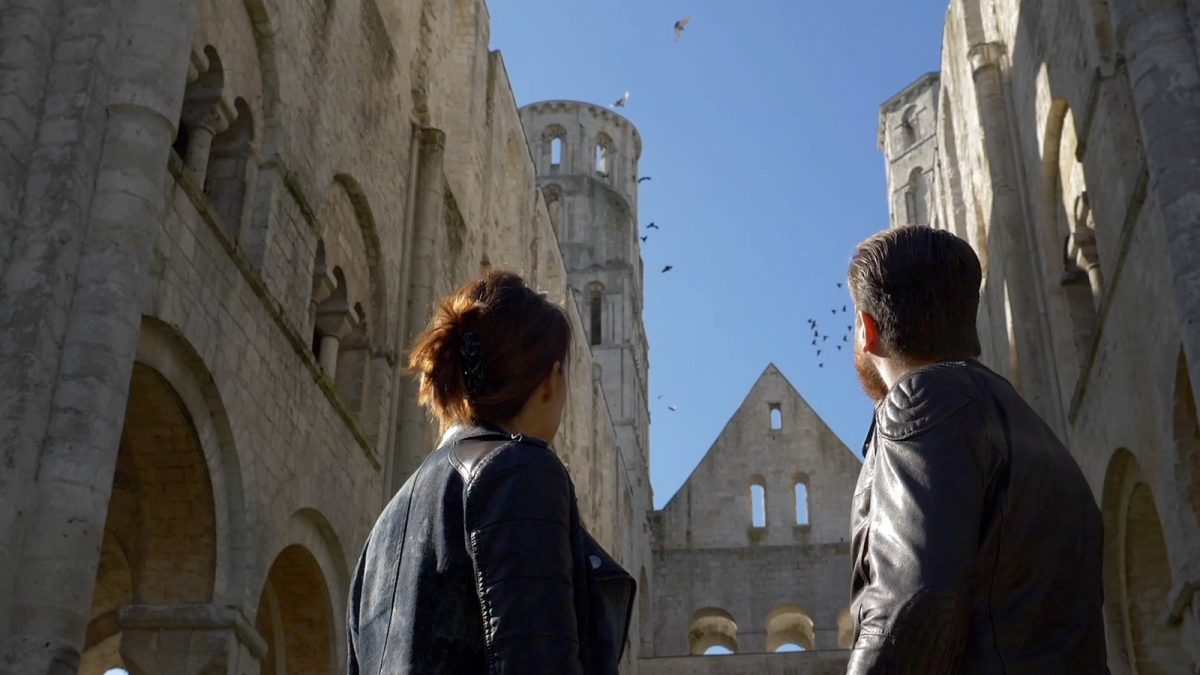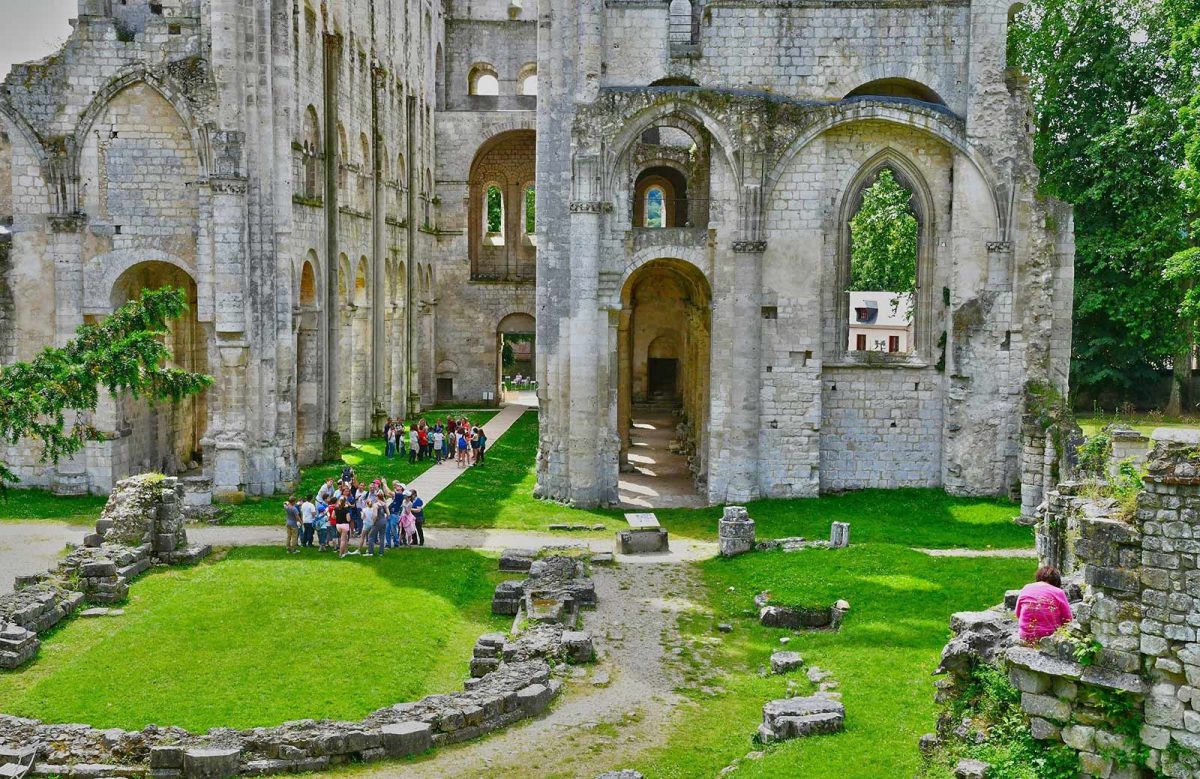Updated on 26 June 2020
Reading time: 3 minutes
The ruins of Jumièges Abbey impress by their scale and by their setting in a beautiful meander of the River Seine. In the abbey’s heyday, few religious establishments in France were more renowned, more powerful, or more charitable.
Centuries of history
The original Jumièges Abbey goes back a long way. It was founded on a gift of forested land by the Merovingian King Clovis II in the year 654 to Saint Philibert. Philibert had been taught by the Bishop of Rouen, Saint-Ouen, who was promoting the building of abbeys in the meanders of the River Seine, downstream from the city. The abbey prospered, and by the time there was a second Abbot, was already home to almost a thousand monks!
Wealthy monasteries, richly endowed by pious patrons along the River Seine (from the Viking word seqwana, which means ‘meandering’), were rich and easy pickings for the marauding Viking raiders in their shallow-draught, clinker-built long ships. Imagine the terror of seeing such boats with their sinister carved prows gliding effortlessly towards you to ‘new fields of slaughter, pillage and devastation!’ But the ‘north men’ would eventually tire of looting, killing and raping, and become farmers, traders, and Christians.
Duke William Longsword rebuilt the monastery on a grander scale, traces of which remain to this day, but the impressive ruins that we see today are mostly those of a landmark church in the history of Norman architecture, the vast rebuilding of which began under William the Bastard in 1040. It was as Conqueror of England that William returned to Normandy in 1067, tired of ravaging Northumbria, to attend the inauguration of the rebuilt abbey. There was an irony here, for Robert Champart, its great builder-priest, had been Bishop of London under King Edward the Confessor as a reward for his support of Edward’s claim to the English throne in 1042: Edward had himself spent 25 years in exile in Normandy and knew Jumièges well. Robert did well since he’s the one who appears crowning Harold Godwinson in Westminster Abbey on the Bayeux Tapestry, but managed somehow to keep his job after the conquest!
And, in the wake of the Norman Conquest, a certain historian and monk, William of Jumièges tells us, as does the Bayeux Tapestry; just what wonderful fellows the Normans were generally, with their conquering, pillaging and rebuilding, just like their ancestors!

Ups and downs
However, the cycle of aggrandisement and diminishment went on. In the mid-13th century, by which time the abbey had huge reach in terms of religious practice and learning, the quire was rebuilt in the Gothic style. In the 15th century, it suffered under English occupation, then prospered until the Wars of Religion in the 17th century, which saw it sacked by the Huguenots. But its final demise came with the French Revolution, when it was forced, along with all other religious institutions, to close, and the remaining monks dispersed (in a sense, sacked one final time). The body of the church and its outbuildings were sold off and used as a quarry for dressed stone which could be reused in local churches and houses; in fact, a gallery from the cloister can be found in Bournemouth! This repellent practice was stopped in favour of preserving it as a romantic ruin. Throughout these disturbances, a great yew tree, now over 500 years old, gave and still gives shelter to the old cloister.

Nearby
USEFUL INFORMATION
Jumièges Abbey
Rue Guillaume le Conquérant, 76480 Jumièges
abbayedejumieges.fr/en
